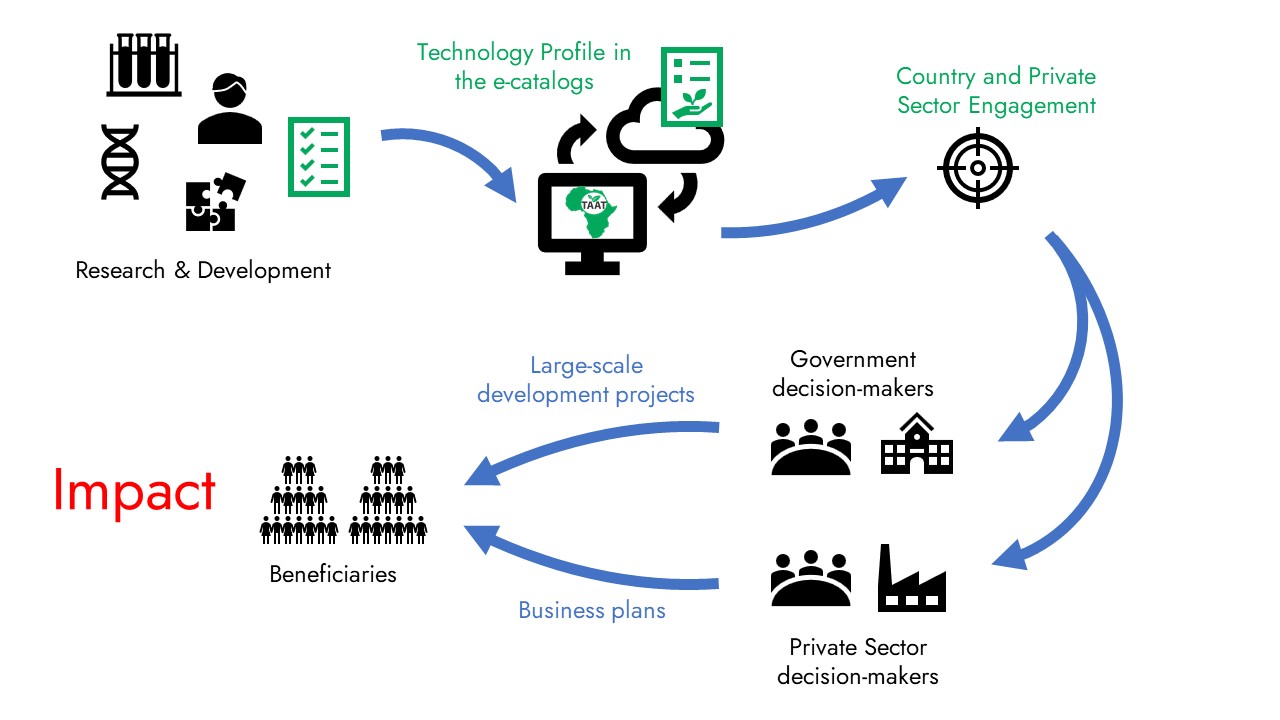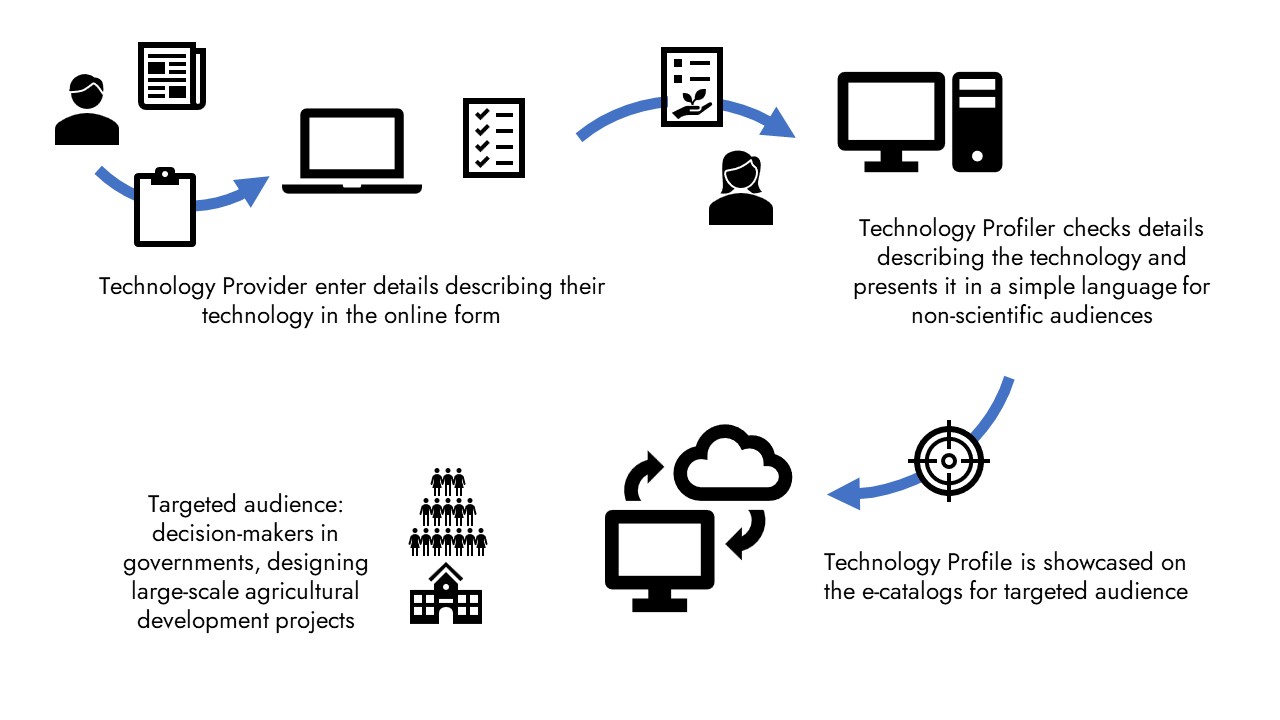Support for Technology Providers
Research in agronomy and agriculture produces new, improved technologies with the potential to increase yields, resist pests and diseases, withstand adverse climates, improve nutrition and income, and more. The TAAT e-catalogs are a powerful step on the road towards such impact:

Technology Providers are researchers or representatives of organizations that own technologies that we showcase on the e-catalogs. They own the data we publish on their technologies in the e-catalogs.

Technology Providers work with the TAAT technology Profiling team to create technology profiles that are customized to the needs of the audience of the e-catalogs:
-
- decision-makers in governments, who are responsible for the design and implementation of large-scale agricultural development projects,
- decision-makers in private sector companies, who are responsible for the integration of agricultural technologies in new or improved business plans,
- decision-makers in international finance institutions funding agricultural development, or in large international organizations such as iNGOs, responsible for designing and implementing large-scale agricultural development programs.
We provide here supporting and guiding material for Technology Providers:
- e-learning course: introduction to the e-catalogs.
- This e-learning course takes under 5 minutes to study and gives you an easy-to-follow overview of the e-catalogs and technology profiles, their objective and their audience.
- Save the file on your computer and double-click on it, it is then automated and interactive.
- Overview of the process for the creation of a new Technology Profile.
- Guide on the use of the online form.
Latest technologies
Structure, Trace, Scale & Connect with Solutions eProd is a digital supply chain management platform designed for agriculture. It helps organizations register farmers, monitor production, ensure traceability, and manage payments efficiently. The system is modular, works offline, and integrates easily with other digital tools.
Scan Nutrients. Get Answers. Act Fast. The AgroCares handheld Nutrient Scanner is a portable, digital tool that delivers instant nutrient analysis of soil, leaves, and feed. With a smartphone and app, agro-service providers can offer rapid testing to clients anywhere—eliminating delays and reducing costs. This creates a new revenue stream, improves customer loyalty, and supports precise input sales. With each scan, data flows to the cloud, building business intelligence for product development or advisory services. The device requires no chemicals, is easy to use, and scales efficiently across locations.
Strong Against Disease, Hot on the Market. This group of long pepper varieties are high-yielding, disease-resistant pepper varieties developed by the World Vegetable Center, designed for hot, disease-prone regions like the Sudan and Northern Guinea Savannas. It offers a yield potential of up to 6.78 tons per hectare, strong resistance to major diseases, and nutritional benefits such as medium spiciness, high Vitamin C, and capsaicin. By promoting stable harvests and sustainable farming practices, PS PEP 1 enhances food security and farmer livelihoods in challenging environments.